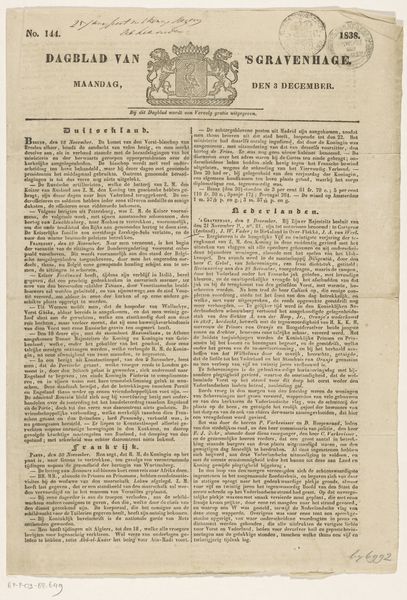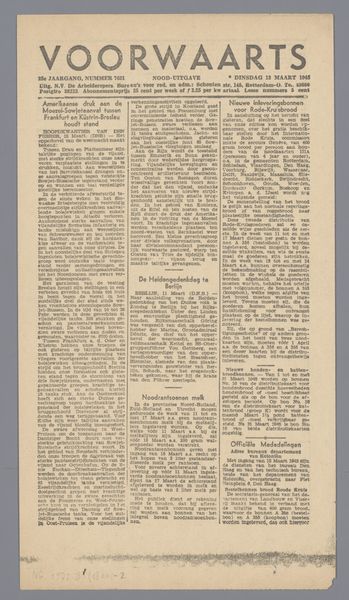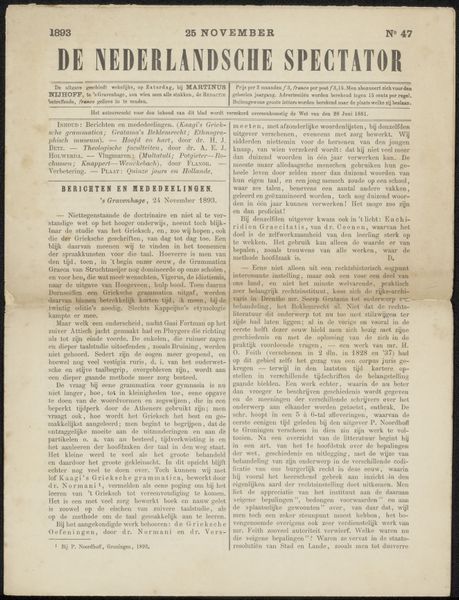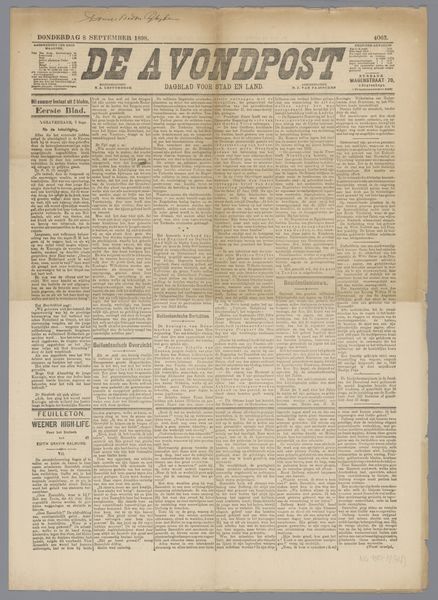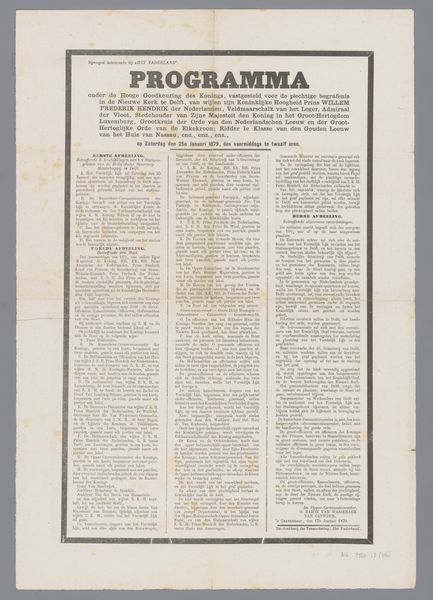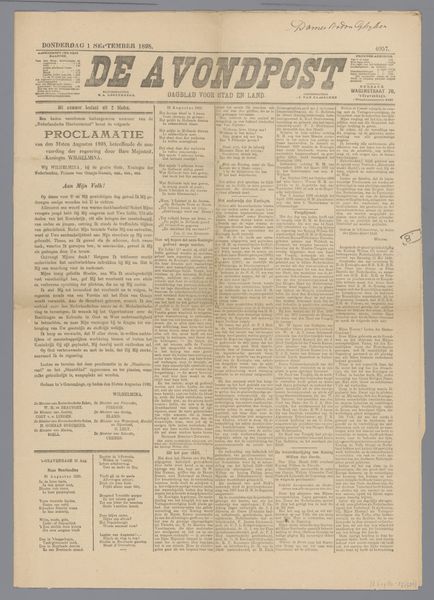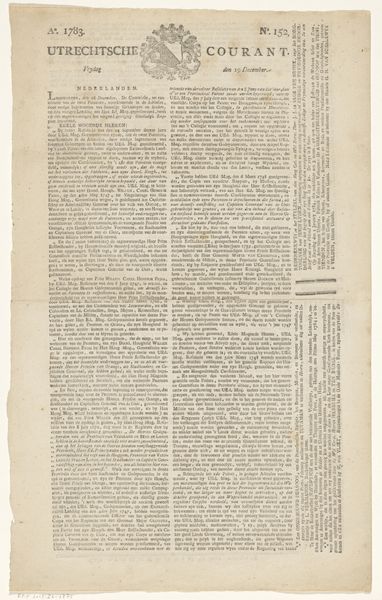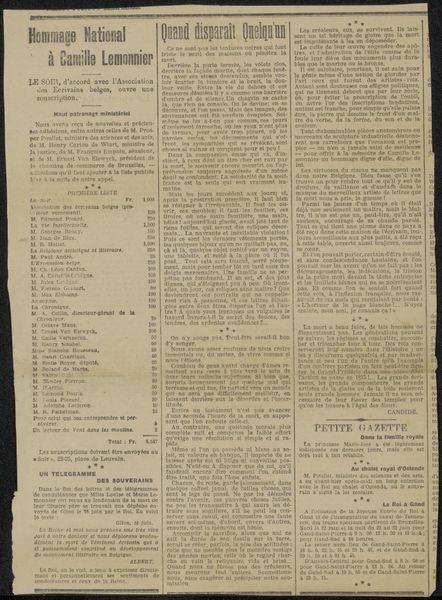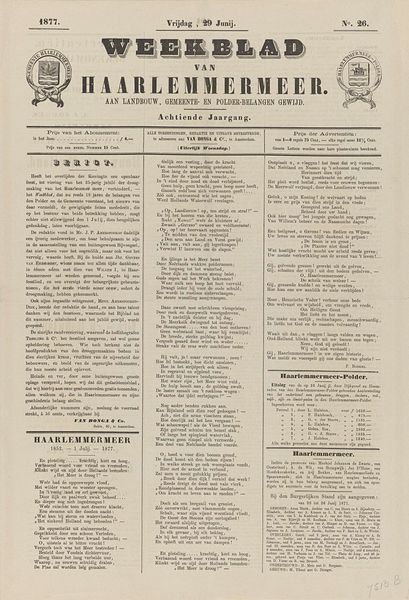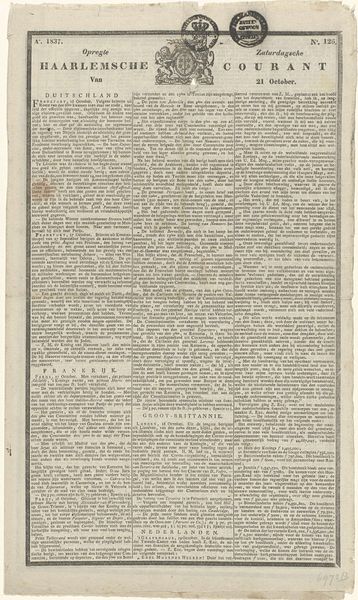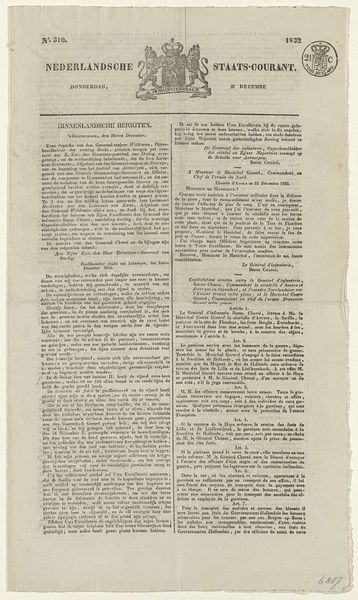
print, textile, paper, typography
#
dutch-golden-age
# print
#
textile
#
paper
#
typography
#
orientalism
Dimensions: height 475 mm, width 318 mm
Copyright: Rijks Museum: Open Domain
Curator: Let’s turn our attention to a fascinating, if somewhat weathered, historical artifact. We have here an example of “Het Centrum: Nieuws- en Advertentieblad voor Midden Java,” a newspaper dating back to 1898. It offers a unique window into Dutch colonial society in Java at the time. Editor: Oh, my. My first impression? Overwhelmed. So much tightly packed text, faded ink… It feels almost suffocating. Like trying to listen in on a very old, very important, but whispered conversation. Curator: Exactly. It’s crucial to understand that this wasn’t just any newspaper. "Het Centrum" served as the official mouthpiece for the Association of Land Tenants in Java, an organization that predominantly represented the interests of European landowners. Therefore, the stories that were omitted are just as relevant as those that were included. Editor: Ah, yes, the silent voices. I'm struck by how assertive the typography is – this bold, imposing title “Het Centrum” practically screams for attention, while all around it you sense that other perspectives are struggling to be heard. Curator: Indeed. Notice the inclusion of celebratory poems, seemingly odes to the Dutch monarchy, right next to advertisements. These juxtaposition force us to ask: whose voices were prioritized, and at what cost? What specific historical perspective did that publication promote? How did its position as the voice of an elite faction in a colonial context affect representation? Editor: It’s like trying to decipher a code. I want to grab my watercolors and just…obscure the parts I find too overwhelming, to paint out the imbalance of the story. This urge speaks to how power operates through communication. We, in the present day, recognize a parallel to information battles. Curator: Absolutely, this primary source demands an approach sensitive to questions of representation. In whose interests was "news" framed and conveyed? Also, notice its materiality: printed on paper and also preserved in textile is significant when looking into Dutch orientalism because it reminds us about trade connections in that era, for instance. Editor: That hits. By grappling with its deliberate design, we, the current audience, might also question ourselves. If it were our news and advertising newspaper from Midden-Java, what are the untold and visible differences or not? Thank you for your important contribution and time.
Comments
No comments
Be the first to comment and join the conversation on the ultimate creative platform.
